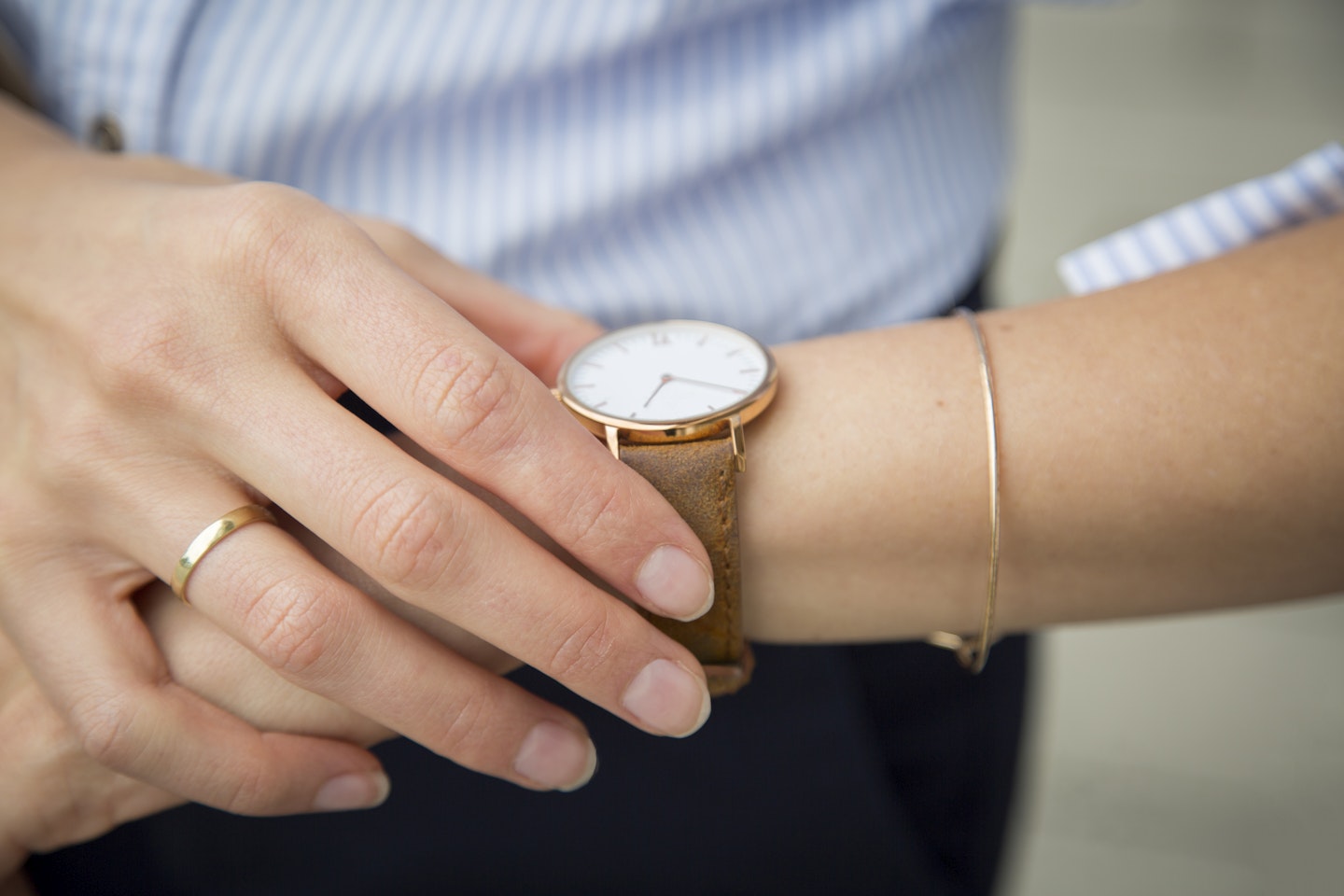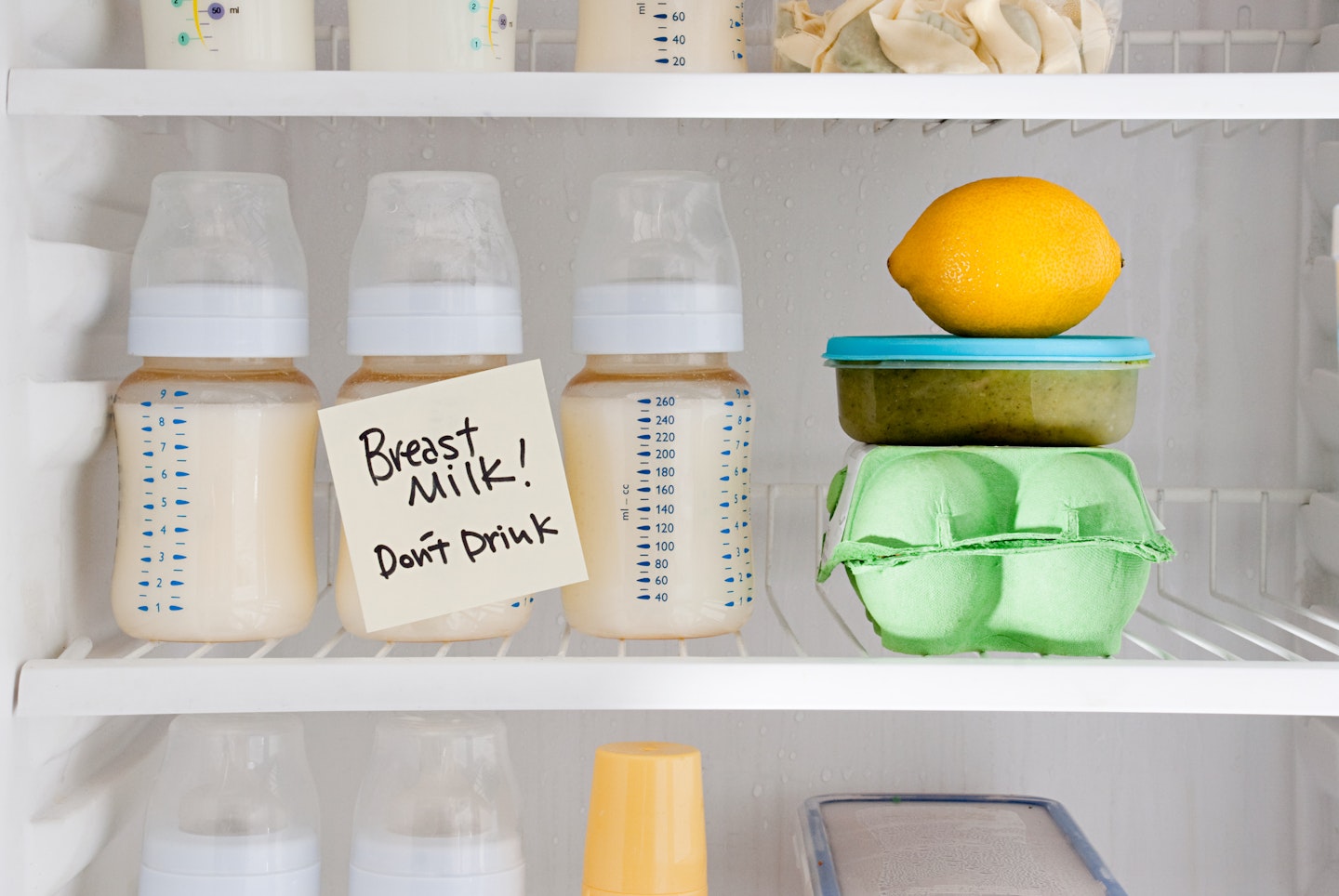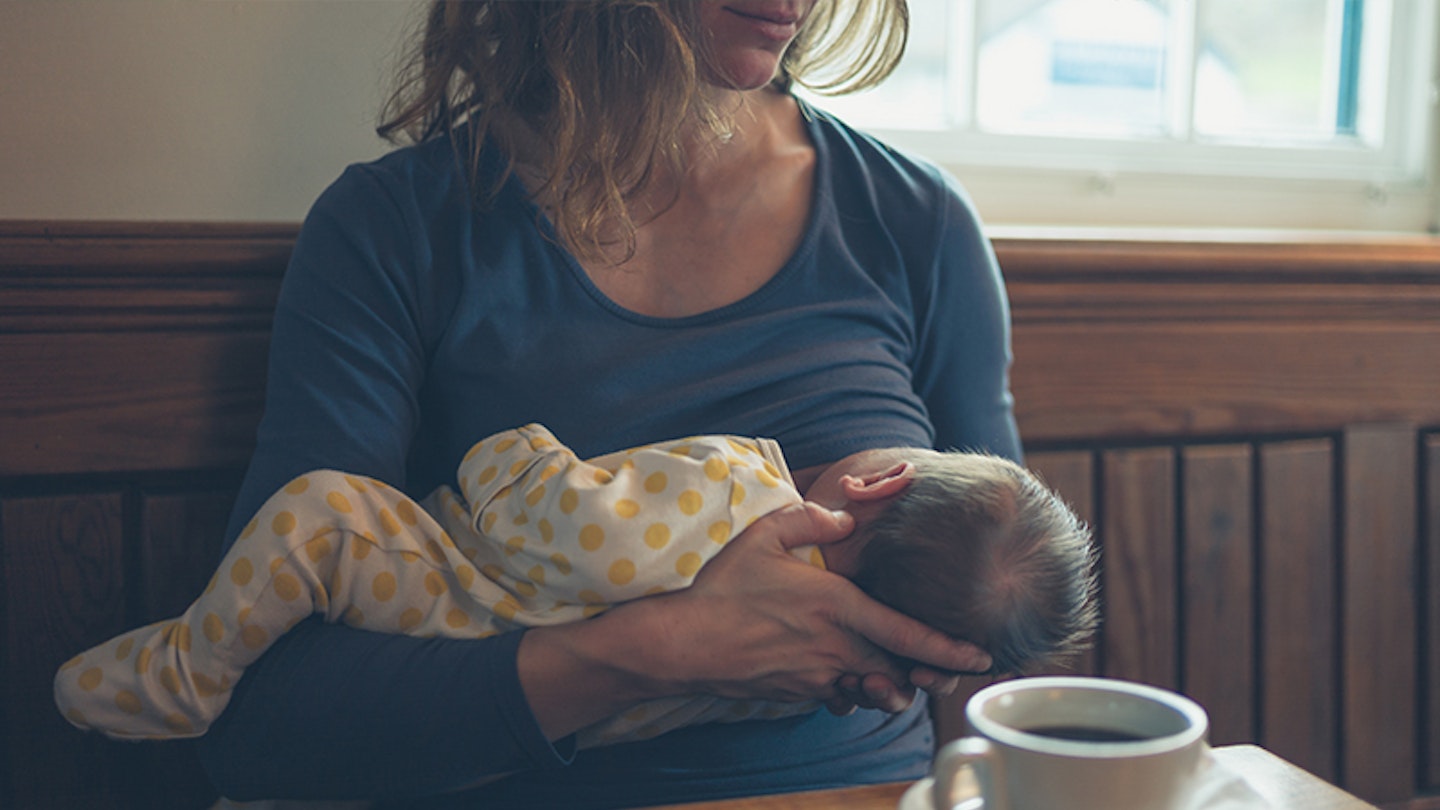Are you breastfeeding here, there and everywhere? Our tips and tricks will make it easy to feed your baby away from home.
It can often be much easier if you can breastfeed your baby on the go in public. However, if you’re new to breastfeeding, there’s a bit of an art to doing it away from home.
You need to work out how to expose only as much boob as you feel happy with, how to stop your baby being distracted by a busier environment, and how you can both feel relaxed so that your milk flows easily and your baby has a good feed.
In this article skip to:
-
Top tips on how to do it with confidence, from what to wear to the best slings
-
Ask the expert: Midwife and Lactation Consultant Anna Cannon gives her advice
Know the laws around breastfeeding in public
The Equality Act 2010 made it illegal for anyone to ask a breastfeeding woman to leave a public place, including a café, shop, hotel, sports and leisure facility, public building, park, cinema, theatre, petrol station or any mode of public transport. If people stare at you, just smile back and show your confidence.
How to breastfeed in public with confidence

While breastfeeding in public comes very comfortably to some mums, it can be a source of anxiety for others. You worry about people looking or saying something, but then also your baby getting the feed he needs when you’re out and about. The main thing to remember is that you have the right to breastfeed anywhere you like, and there are ways to banish the nerves and move forward. It’s just about taking one step at a time.
Location, location, location
You have the right to breastfeed anywhere you like – but planning where you will feed once baby gets hungry is a good idea when you’re starting out. Choose somewhere you will feel relaxed – for example, a local NCT meeting, a friendly cafe or a local park. You’re less likely to feel self conscious if you have someone to chat to, so take a friend, your mum or your partner along with you. You should never feel like you need to hideaway and you should try to act as you normally would – if you want to sit in your favourite window seat in your local café then go for it. Resist the urge to retreat to the toilet for a private feed.
Perfect breastfeeding outfits
There are lots of breastfeeding tops and nursing bras available and what you choose is really a matter of personal taste. Some mums prefer to wear loose tops that can be lifted up while others like to keep their tummy covered up and wear two stretchy tops – one which can be lifted up and the other pulled down.
You may find you can wear your usual maternity tops, and simply fit baby underneath, close to your skin.
Read more: 11 occasion dresses for mums who are breastfeeding
Practice at home
What you see when you look down at yourself breastfeeding is very different to what someone sat opposite you sees.
To get a better idea, try nursing at home in front of a mirror. Dress in the clothes you plan to wear when you’re out and about and you can practise how to discretely cover up, especially while your baby is latching on.
Lean back
If your baby tends to ‘pop off’ the nipple frequently, try leaning back slightly. This makes your baby slope towards you slightly, so if he pops off, his head still blocks the view. It also gives him the advantage of gravity, so he’s less likely to come off and need re-attaching.
Slings and cover-ups
Some mums like to breastfeed while their baby is a sling. With this, you have the advantage of being able to pull the sling higher up baby’s head to provide more cover, while still giving you a good view of baby. Some mums simply lay a muslin cloth (great for mopping up any accidents), on their chest while breastfeeding.
Be prepared
Add your breastfeeding essentials to your baby’s changing bag before heading out. Take breast pads, a muslin and a spare top in case you experience major leakage. If something does go wrong, don't panic, there’s a strong chance you’ll experience a cringe-worthy mishap. Whether you’re faced with a nipple slip or a breast padfalling out of your handbag, all you have to do, is laugh.

Ask the expert: Anna Cannon
‘Even when you’ve mastered feeding your baby at home, it’s normal that you might feel apprehensive about doing the same while you’re out and about to start with,’ says midwife and lactation consultant Anna Cannon. Anna is a midwife and an International Board Certified Lactation Consultant with Breastfeeding London.
Here are Anna Cannon's expert tips to help you breastfeed in public...
breastfeeding tips
 1 of 7
1 of 71) Master breastfeeding at home first
The first rule of breastfeeding in public is to take it at your own speed.
‘If you’re already confident with breastfeeding and want to get out there, go for it!’ says Anna. ‘But if it’s taking a bit more time to find your rhythm, then just go at your own speed.’
Getting in tune with his feeding cues – the signs he gives when he’s hungry or when he needs winding – and discovering how long he tends to feed takes time.
‘Knowing all this makes it much easier to feel confident about feeding him on the go,’ says Anna. When you’re confident about what you’re doing, it’ll be far easier to feed in more public places.
 2 of 7
2 of 72) Layer up
Wearing the right clothes makes breastfeeding much easier. A good option is to wear a couple of vest tops.
When your baby needs to feed, one vest pulls up, one pulls down, and he enjoys fast access without exposing your tummy or chest.
For extra coverage, tuck a muslin into your bra strap and use it as a shielding scarf.
‘Layer up with a cardigan and outer layers you can easily take off too,’ says Anna.
‘Less material in the way means it’s easier for your baby to get a good latch.’ A well-fitting nursing bra underneath is a must for allowing easy access – if you bought yours before your baby was born, get measured again.
‘By the time your baby is two weeks old, your breasts have stopped feeling engorged and you’ll get a truer sense of the right bra size,’ advises Anna.
 3 of 7
3 of 73) Choose a quiet spot
‘Find somewhere to feed where you and your baby feel relaxed,’ Anna suggests.
‘If you’re in a café and don’t want to feel self-conscious, choose a seat with your back to the crowd.’
This will also help prevent your baby from being distracted. If you’re with a friend, you could ask her to sit opposite you and provide you some extra shielding.
If you feel you need more privacy, or your baby is easily distracted, many high street shops and centres have feeding rooms.
 4 of 7
4 of 74) Use different positions
If you’d rather people didn’t notice you’re breastfeeding – and that’s OK, in just the same way that conspicuously breastfeeding is too – hold your baby in a ‘camouflage’ position.
‘These positions mean other people just don’t know that you’re feeding your baby,’ says Anna.
‘The cradle position, where you hold your baby facing your breast, looks like you’re just having a cuddle. When he’s old enough to sit up with his legs either side of your thigh, feed him in that position and it’ll look like you’re playing with him.’
Feeding your baby while he’s in his sling is also a great option if your aim is to be discreet.
Babies, and breasts, come in different shapes and sizes, so visit a sling library before you buy to find the right one for you both: find your nearest at ukslinglibraries.wordpress.com
 5 of 7
5 of 75) Offer a quick top-up
The best way to make breastfeeding on the go simple is to practise responsive feeding.
That means giving your baby milk when he wants it, without worrying how long he feeds for. ‘Not every feed needs to be a 20-minute feast,’ says Anna.
‘Sometimes babies just want a quick top-up because they’re thirsty. Breastfeeding like this makes being out and about easier as you’re not planning in long feeds, or worrying about your baby getting distracted. If your baby’s hungry, he’ll feed. If he’s distracted, stop, cover up and carry on shopping!’
 6 of 7
6 of 76) Express yourself
Once your baby is six weeks oldyour milk supply should be well established and you can start to express milk which you can feed your baby on the run if you’re not comfortable breastfeeding out and about.
‘The best time to express is first thing in the morning,’ says Anna.
‘Feed your baby on one breast, then express from the other. When it’s time for your baby’s next meal, feed him on the breast you expressed from. The milk can be stored in the fridge, as long as the temperature is under 4°C, for three to five days.’
 7 of 7
7 of 77) Get savvy
There are a couple of cold-weather issues to know about. The first is that some cough remedy ingredients can slow down milk production, so check with your pharmacist that anything you use is suitable for use while breastfeeding.
‘Try hot water with honey and lemon instead,’ says Anna. Cold weather can also make your nipples sensitive. ‘Wrap up well and use heat pads. If these don’t help, get advice from your GP,’ says Anna.
Remember, feeling comfortable breastfeeding on the go is all about you and your baby, so go with what works best for you!
More related articles:
Have you got any tips for mums new to breastfeeding in public? Let us know on Facebook orTwitter! You can also Subscribe to Mother&Baby magazine for expert tips, must-have products and invaluable advice for mums, delivered straight to your door.

